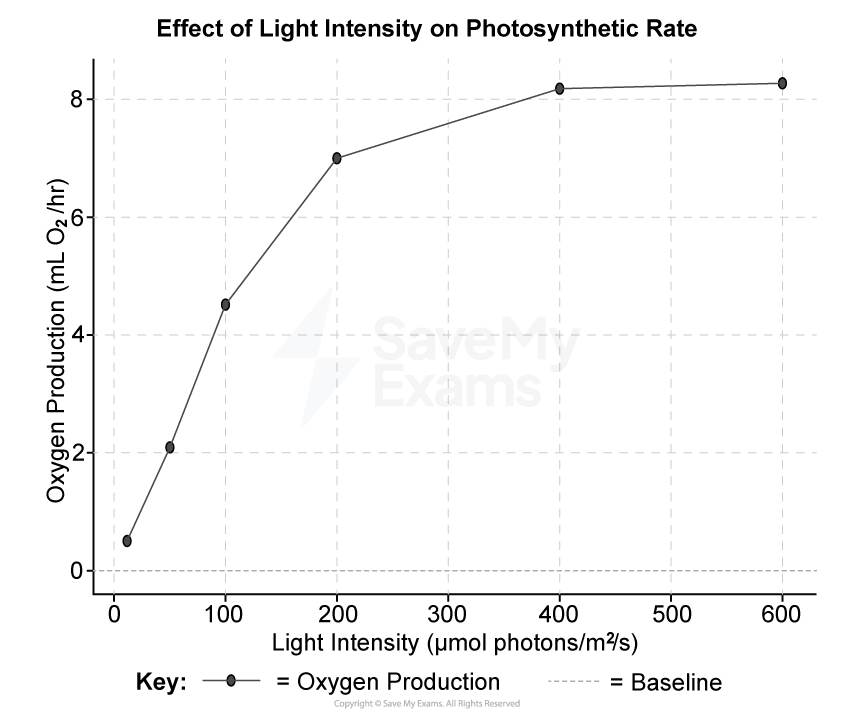Photosynthesis is the process by which autotrophic organisms, such as plants, convert light energy into chemical energy. This process takes place in the chloroplasts and consists of two main stages: the light-dependent reactions and the Calvin cycle.
Identify the organelle where photosynthesis occurs.
Describe the role of light energy in the light-dependent reactions of photosynthesis.
Explain how the Calvin cycle depends on the products of the light-dependent reactions.
There are 3 different types of chlorophyll that absorb a range of different wavelengths of light, as shown in the absorption spectrum in Figure 1. Green light has a wavelength of between 500 and 570nm.


Predict what would happen to photosynthesis if a plant were exposed to only green light.
Did this page help you?







